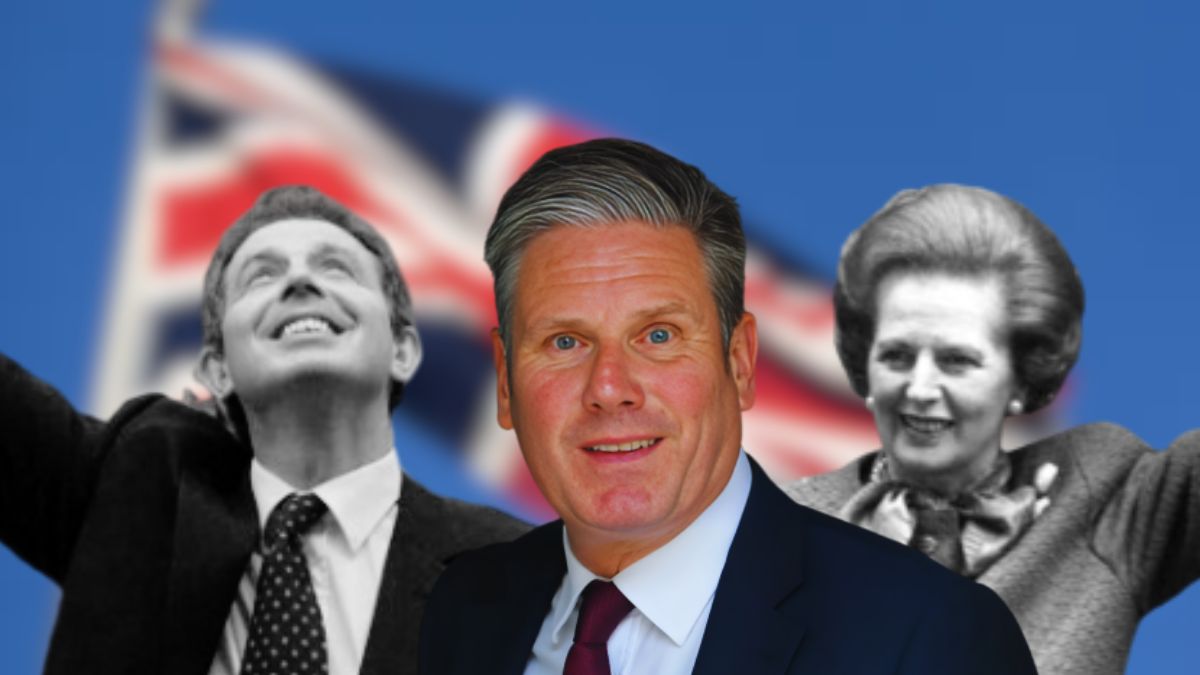Citizens of the United Kingdom have begun casting their votes. All polls have suggested a victory for Keir Starmer’s Labour Party in the UK general election. But it is not expected to be just another win: It is expected to be the largest majority in modern British history.
Survation’s final mega poll, released Tuesday (July 2), gave Labour a “majority” of 318 seats. Labour, the poll predicts, will secure 484 out of the 650 seats in parliament. Other polls have shown similarly large defeats looming for Prime Minister Rishi Sunak’s Conservative Party.
On Wednesday (July 3), YouGov’s final poll forecast a “historic election victory” for the centre-left party, predicting 39 per cent of the vote and 431 seats in the House of Commons.
This potential victory would be historic because the “majority” of over 200 has not happened since 1935- that’s 89 years!
We explain what “majority” means when it comes to UK general elections, and what the biggest majorities in Britain have been since 1928, when the UK adopted Universal Adult Franchise.
What is a majority in UK elections?
In the UK, the majority refers to the difference between the number of seats the winning party has and the number of seats that all the other parties combined together have.
Impact Shorts
More ShortsAn example would illustrate this quite well.
According to Survation’s final poll, the Labour is expected to get 484 seats out of 650 in total. That means that all non-Labour parties together are going to get 650-484= 166 seats.
The majority would be 484-166=318 seats. Thus, Labour’s predicted majority of 318 means they would have 318 seats more than the combined total of all the other parties’ seats.
Here’s a look at some of the largest majorities since Universal Adult Suffrage in UK elections.
1997: Tony Blair and the triumphant return of Labour Party
In 1997, the Labour Party had been out of power for 18 years. When it lost the 1992 election to John Major’s Conservatives, many questioned whether it would ever regain power.
Under the leadership of Tony Blair, Labour won the May 1, 1997 general election by a landslide.
One factor in the Tories’ defeat was the economic crisis of September 1992, when the British pound was ejected from a European exchange rate system. Major also faced a series of financial and sexual scandals within his party and deep divisions over the UK’s place in the European Union.
Labour won a majority of 179 seats, even bigger than the party’s victory over Winston Churchill’s Conservatives in 1945. The Conservatives ended up with just 165 of the 650 seats in the House of Commons.
2001: Blair’s resounding re-election
Tony Blair’s Labour Party was widely expected to be re-elected by a big margin, similar to its victory four years earlier.
The election took place in June 2001, a month later than planned due to an outbreak of foot and mouth disease. Despite an incident where Blair’s deputy, John Prescott, punched a man who threw an egg at him, Labour performed well, winning a majority of 167 seats.
1945: Winston Churchill’s defeat after WWII
In 1945, Winston Churchill’s Conservative Party suffered one of its biggest defeats shortly after the Allies’ victory over Nazi Germany. During the war, Churchill had governed in a coalition with other parties, notably Labour, whose leader Clement Attlee acted as his deputy.
The election on July 5, 1945, was the first in a decade due to WWII. Labour fought on domestic issues, campaigning for housing, full employment, and state intervention in the economy. The results were announced three weeks later, showing Labour had won a landslide with 48 per cent of the vote and its biggest-ever majority of 145 seats in the House of Commons.
1983: Thatcher’s Falklands triumph
Following the Falklands War in 1982, Conservative Prime Minister Margaret Thatcher was widely expected to win the June 1983 general election. Her victory was assured after Labour published a radical manifesto, described by one moderate party member as “the longest suicide note in history.”
Thatcher won a landslide and remained in power until 1990. The Conservative Party won a majority of 144 seats.
With inputs from agencies
)